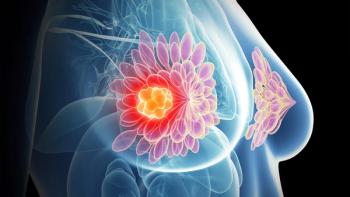
The Nose Knows: Using Aromatherapy to Relieve Symptoms in Patients Undergoing BMT
A group of nurses at Froedtert Hospital developed a study to evaluate the use of aromatherapy to relieve symptoms in patients undergoing blood and marrow transplant.
Interest in complementary approaches to manage cancer-related symptoms continues to grow among oncology practitioners and their patients. With this in mind, a group of nurses at Froedtert Hospital in Milwaukee designed a project to see how one approach, aromatherapy, might be effectively used for symptom relief in patients in the hospital’s hematology/oncology department who are undergoing blood and marrow transplant.
Essential oils are low cost and have minimal side effects. The aim of this initial project, begun in August 2016, was to incorporate them into the repertoire of options available to help patients at Froedtert manage treatment-related side effects. “Right now, we’re just documenting age, gender, what oils the patients used, and what symptom they used them for…Our hope is to develop a nursing research study in the future,” the nurses explained during a poster presentation at the 2017 ONS Congress.
After conducting an extensive literature review, and based on guidance from Froedthert’s Clinical Cancer Center’s Wellness Store, 5 essential oils were chosen for the intervention. Each was explained in a short handout, “Patient’s Guide to Aromatherapy and Essential Oils,” that was included in patients’ admission folders:
- Bergamot: anxiety
- Ginger: nausea/vomiting
- Lavender: trouble sleeping, anxiety, pain
- Lemon: improving focus, fatigue
- Peppermint: nausea, vomiting, heartburn or reflux, fatigue
The patient handout also included general information on aromatherapy and essential oils and how to use them safely and for the optimum effect.
Staff education was another part of the intervention, and the nurses stressed that the oils are strictly for inhalation: “We don’t recommend ingesting or applying to the skin. We typically put a few drops on a piece of gauze in a medicine cup at the bedside; if patients want to tape it to their gown, they can do that as well.”
Aromatherapy was chosen for this intervention, they noted, because it is becoming increasingly popular and patients are bringing the oils in anyway. “They were bringing in diffusers which we know isn’t necessarily good,” the nurses remarked, because these diffusers can be routes for bacteria and infection.
“The most popular oils are lavender and peppermint, and mostly patients use these for calm and relaxation, and some nausea,” the nurses noted in their presentation. “If patients are really nauseous [for example]—and we’ve thrown everything at them but the kitchen sink—we say, ‘Why don’t you try ginger?’”
Thus far, they have found the aromatherapy was used equally by men and women in the unit, and the symptom patients sought to relieve most was nausea.
Overall, the authors note in their study abstract, “The use of essential oils has been well received by patients and staff.” They noted that since the project began, other nursing areas throughout the health system have expressed interest in using them in their practice, and this project can be used as a framework to other units.
Newsletter
Knowledge is power. Don’t miss the most recent breakthroughs in cancer care.




















































































